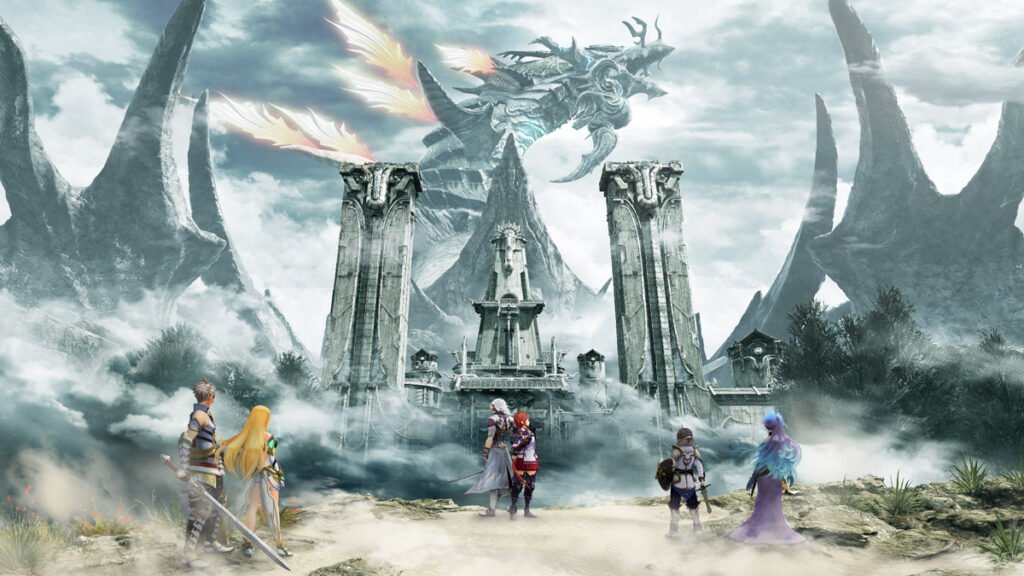lifestyle
Explore The Magnificent World of Trees: Nature’s Silent Guardians
Trees, the silent giants of our natural world, play an indispensable role in maintaining ecological equilibrium.

Trees, the silent giants of our natural world, play an indispensable role in maintaining ecological equilibrium. From providing oxygen and shelter, to supporting biodiversity and mitigating climate change, trees serve as living testaments of nature’s wonders.
Trees Are Beneficial to Our Environment:

1. Oxygen Production:
Trees serve as nature’s oxygen factories through photosynthesis. Through this remarkable mechanism, they transform carbon dioxide into oxygen and provide us with air to breathe – an indispensable contribution that links trees with all living creatures on Earth.
2. Biodiversity and Habitats:
Forests comprised of different tree species create intricate ecosystems, which in turn provide shelter to an impressive array of flora and fauna species. Their biodiversity plays an essential role in maintaining resilient and sustainable ecosystems that contribute to nature’s delicate balance.
3. Climate Regulation:
Trees serve as natural climate regulators by absorbing carbon dioxide – the greenhouse gas responsible for global warming – through photosynthesis. As climate change mitigation tools, trees play a crucial role in stabilizing weather patterns, controlling temperatures and creating resilience against extreme weather events.
4. Soil Health and Water Management:
Tree roots serve to anchor soil, protecting against erosion while simultaneously stabilizing its structure – essential elements in maintaining fertile ground as well as efficient water absorption. In essence, trees serve as natural sponges absorbing and slowly releasing rainwater in order to maintain stable watersheds.
5. Economic and Social Benefits:
Trees provide tangible economic and social benefits to human societies beyond their ecological roles. Trees serve as raw material suppliers for industries ranging from timber production to medicine production, as well as increasing quality of life by decreasing air pollution levels, providing shade, and creating visually pleasing environments.
1. Deforestation:
Deforestation is one of the primary threats to tree importance. Clearing forests for agriculture, logging, and urbanization has the ability to significantly diminish biodiversity, disrupt ecosystems, and contribute to climate change – all while diminishing tree significance as an environmental asset.
2. Climate Change Impacts:
Trees are vulnerable to the effects of climate change. As weather patterns shift and temperatures rise, pests and diseases spread quickly – potentially leading to population and health declines that threaten tree resilience and may eventually threaten their existence.
Preserving Tree Importance:

1. Reforestation and Afforestation
Initiatives dedicated to planting trees and restoring degraded landscapes are central in combatting deforestation’s negative effects, helping regenerate ecosystems while protecting key tree species.
2. Sustainable Practices
Adopting sustainable forest management practices will ensure the long-term health and availability of tree resources while mitigating environmental impact. Balancing human needs with ecological preservation is crucial for long-term forest sustainability.
Trees play an essential role in our world; they serve as architects of life itself. Understanding and protecting their significance goes far beyond environmental concerns; it’s essential for both future generations and ourselves as we commit ourselves to living sustainably on this Earth. Through reforestation efforts, sustainable practices, and collective appreciation of trees we can achieve an idyllic coexistence between ourselves and nature for a resilient planet in which to reside.
Threats to Trees:

1. Deforestation:
The clearing of forests for agriculture, logging and urban development poses a serious threat to tree populations. Deforestation not only decreases biodiversity but also contributes to climate change.
2. Climate Change:
Its Rising temperatures, altered precipitation patterns and extreme weather events all play a direct impactful on tree health. Climate change presents additional threats such as increased susceptibility to pests and diseases.
3. Urbanization:
Rapid urban growth often necessitates the removal of trees. While urban trees provide benefits like shade and air quality improvements, they face unique challenges due to pollution levels and limited space for root expansion.
1. Reforestation and Afforestation:
Initiatives that plant trees and restore degraded landscapes play a pivotal role in conserving tree species and their associated ecosystems.
2. Sustainable Forest Management:
Practices that balance human needs with conservation goals of forests, such as selective logging and controlled burns, contribute to long-term tree health.
3. Community Involvement:

Engaging local communities in tree conservation efforts helps foster a sense of ownership while assuring that practices are sustainable and culturally sensitive.
Conclusion: Trees play an essential part in our world’s intricate dance of life. Their benefits reach far beyond physical presence; as we navigate modern life’s many obstacles, understanding and appreciating trees’ importance is of the utmost importance. Through conservation practices and sustainable initiatives, we can ensure they continue to provide us with abundant benefits for generations to come.
lifestyle
Unveiling the Layers of Truth: A Comprehensive Exploration 1
Truth, a concept that has intrigued philosophers, scholars, and seekers of wisdom throughout the ages, serves as the cornerstone of our understanding of reality.

Introduction:
Truth, a concept that has intrigued philosophers, scholars, and seekers of wisdom throughout the ages, serves as the cornerstone of our understanding of reality. In this article, we embark on a journey to unravel the multifaceted nature of, examining its philosophical underpinnings, societal implications, and the challenges inherent in its pursuit.
I. The Philosophical Landscape of Truth:

The concept of has long been a central focus in philosophy, captivating the minds of thinkers across centuries and cultures. In this exploration, we delve into the rich and intricate philosophical landscape of truth, unraveling the nuanced perspectives that have shaped our understanding of this fundamental concept.
I. Ancient Foundations:
A. Plato’s Allegory of the Cave:
The quest for finds early expression in Plato’s Allegory of the Cave. Plato invites us to envision a world where individuals are chained in a cave, their perception limited to shadows cast on the wall. The allegory prompts contemplation on the nature of reality and the journey toward discovering higher beyond mere appearances.
B. Aristotle’s Correspondence Theory:
Aristotle contributes to the philosophical discourse with his Correspondence Theory of . According to Aristotle, a statement is deemed true when it accurately corresponds with objective reality. This foundational idea shapes subsequent discussions on, laying the groundwork for further exploration.
II. Modern Philosophical Perspectives:

A. Immanuel Kant’s Transcendental Idealism:
Kant introduces a revolutionary perspective with his Transcendental Idealism, challenging the traditional view of truth as an objective reality waiting to be discovered. Kant posits that is constructed through the synthesis of human perception and the inherent structures of the mind. This shift marks a turning point in the philosophical understanding of truth.
B. Existentialist Notions of Truth:
Existentialist thinkers, such as Jean-Paul Sartre and Albert Camus, offer a different lens through which to examine truth. Existentialism emphasizes individual experience and personal responsibility, suggesting that is not only a cognitive endeavor but also a lived and subjective reality. This existentialist perspective adds layers of complexity to the philosophical landscape.
III. Contemporary Debates:

A. Pragmatism and Truth:
Pragmatism, championed by philosophers like William James and John Dewey, proposes that the of a statement lies in its practical consequences. This pragmatic approach challenges the notion of an absolute and detached truth, emphasizing the functional aspect of in guiding human action and inquiry.
B. Postmodern Critiques:
Postmodernism introduces skepticism about grand narratives and overarching truths. Thinkers like Michel Foucault and Jacques Derrida argue that is socially constructed and influenced by power dynamics. This deconstructionist approach challenges the stability of emphasizing the importance of recognizing diverse perspectives and interpretations.
The philosophical landscape of is a dynamic terrain marked by diverse perspectives and evolving theories. From ancient allegories to modern existentialist insights and contemporary debates in pragmatism and postmodernism, the exploration of reflects the intellectual journey of humanity. As we navigate this complex landscape, we find that is not a static entity awaiting discovery but a concept intricately woven into the fabric of human thought and experience. This ongoing philosophical inquiry invites us to question, reflect, and engage with the perennial quest for truth in our ever-evolving understanding of the world.
II. Truth in Society:

A. Truth and Power Dynamics:
Society is intricately woven with power structures that influence the dissemination and acceptance of . The relationship between truth and power is complex, with instances of being wielded as a tool for empowerment or manipulation. Understanding the dynamics between truth and power is essential in navigating the societal landscape.
B. Media and Truth:
In the age of information, the role of media in shaping cannot be overstated. The advent of digital communication has both democratized and distorted the flow of information. Fake news, misinformation, and propaganda challenge our ability to discern from falsehood, highlighting the importance of media literacy in the pursuit of an informed society.
III. The Challenges of Truth:
A. Cognitive Biases:
Human cognition is susceptible to various biases that can cloud our perception. Confirmation bias, for instance, leads individuals to favor information that aligns with their preexisting beliefs. Recognizing and mitigating these biases is crucial in fostering a more objective understanding of truth.
B. Ethical Dilemmas:
The pursuit of is not devoid of ethical considerations. Balancing the need for transparency with the potential harm caused by revealing certain truths raises ethical dilemmas. Striking a delicate balance between and ethical responsibility is a constant challenge in various fields, from journalism to scientific research.
Conclusion:
As we navigate the intricate landscape of , it becomes evident that the concept transcends mere objectivity or subjectivity. Truth is woven into the fabric of our philosophical inquiries, societal structures, and individual perceptions. Embracing the complexity of requires a commitment to intellectual honesty, critical thinking, and a nuanced understanding of the forces that shape our perception of reality. In the pursuit of , we embark on a perpetual journey, one that invites introspection, dialogue, and a relentless pursuit of a more profound understanding of our shared existence.
lifestyle
Exploring Amazon Message Center: Enhancing Communication and Efficiency great 6
Exploring Amazon Message Center: Enhancing Communication and Efficiency

Table of Contents
In the bustling digital landscape of e-commerce, effective communication channels are paramount. For both sellers and buyers, streamlined communication can mean the difference between a smooth transaction and a frustrating experience. Recognizing this, Amazon, one of the world’s largest online marketplaces, has developed its own messaging platform known as the Amazon Message Center. This platform serves as a hub for communication between sellers, buyers, and Amazon itself, facilitating interactions that are crucial for a seamless shopping experience. In this article, we delve into the workings of the Amazon Message Center, exploring its features, benefits, and significance within the Amazon ecosystem.
Understanding Amazon Message Center
The Amazon Message Center is an integrated messaging system designed to facilitate communication between buyers, sellers, and Amazon customer service representatives. It serves as a centralized platform where users can send and receive messages related to their orders, products, and account inquiries. Accessible through the Amazon Seller Central or Buyer-Seller Messaging Service, this feature enables efficient communication while ensuring compliance with Amazon’s guidelines and policies.
Features and Functions
- Order Inquiries: Buyers can use the Message Center to inquire about the status of their orders, request order updates, or seek assistance regarding delivery issues.
- Product Inquiries: Customers can ask sellers questions about products listed on Amazon, such as specifications, availability, or customization options.
- Customer Support: Sellers can address customer queries, provide assistance, and resolve issues directly through the Message Center, enhancing customer satisfaction and retention.
- Policy Compliance: Amazon monitors messages exchanged through the Message Center to ensure compliance with its policies, including guidelines on prohibited content and prohibited actions.
- Notifications: Users receive notifications for new messages, ensuring timely responses and facilitating proactive communication.
Benefits of Amazon Message Center
- Efficiency: By centralizing communication, the Message Center streamlines interactions, reducing response times and enhancing overall efficiency for both sellers and buyers.
- Transparency: Transparent communication fosters trust between buyers and sellers, as well as between sellers and Amazon, contributing to a positive shopping experience.
- Conflict Resolution: The Message Center provides a platform for resolving disputes and addressing customer concerns, minimizing the escalation of issues and potential negative feedback.
- Record Keeping: Messages exchanged through the Message Center are archived, providing a record of communication history that can be referenced if needed, such as for dispute resolution or order inquiries.
- Compliance: By routing communication through a monitored platform, Amazon ensures compliance with its policies and guidelines, maintaining the integrity of the marketplace.
Best Practices for Using Amazon Message Center

- Timely Responses: Respond promptly to messages to maintain good communication and provide excellent customer service.
- Professionalism: Maintain a professional tone and adhere to Amazon’s communication guidelines to ensure compliance and uphold the reputation of your business.
- Clarity: Clearly communicate information and instructions to avoid misunderstandings and ensure a smooth transaction process.
- Documentation: Keep records of all communication exchanged through the Message Center for future reference and documentation purposes.
- Respect: Treat all users with respect and courtesy, fostering positive interactions and enhancing the overall shopping experience.
Conclusion
The Amazon Message Center plays a crucial role in facilitating communication within the Amazon marketplace, benefiting both sellers and buyers alike. By providing a centralized platform for efficient, transparent, and compliant communication, it enhances the overall shopping experience while maintaining the integrity of the marketplace. Sellers and buyers can leverage the features of the Message Center to resolve issues, address inquiries, and ensure smooth transactions, ultimately contributing to a thriving e-commerce ecosystem on Amazon
FAQ’s
Frequently Asked Questions (FAQs) About Amazon Message Center
As users navigate the intricacies of Amazon’s platform, questions often arise regarding its features and functionalities, including the Amazon Message Center. Here are some frequently asked questions along with their answers to provide clarity and assistance:
1. What is the Amazon Message Center?
- The Amazon Message Center is an integrated messaging system within Amazon’s platform that facilitates communication between buyers, sellers, and Amazon customer service representatives. It serves as a centralized hub for exchanging messages related to orders, products, and account inquiries.
2. How do I access the Amazon Message Center?
- Sellers can access the Message Center through Amazon Seller Central, while buyers can use the Buyer-Seller Messaging Service. Both platforms provide access to communication tools for interacting with customers, addressing inquiries, and managing orders.
3. What types of messages can I send and receive through the Amazon Message Center?
- Users can send and receive various types of messages, including inquiries about orders, questions about products, customer support queries, and notifications related to order updates or account activity.
4. Are there any guidelines or policies for using the Amazon Message Center?
- Yes, Amazon has guidelines and policies regarding communication through the Message Center. Users are expected to adhere to these guidelines, which include rules on prohibited content, prohibited actions, and guidelines for professional and respectful communication.
5. How can I ensure timely responses to messages received through the Message Center?
- It’s essential to regularly check the Message Center for new messages and respond promptly to inquiries and customer requests. Enabling notifications can help ensure that you’re alerted to new messages in a timely manner.
6. Can I use the Amazon Message Center for resolving disputes or issues with customers?
- Yes, the Message Center can be used for resolving disputes and addressing customer issues. It provides a platform for communicating with customers, clarifying concerns, and working towards satisfactory resolutions.
7. Are messages exchanged through the Amazon Message Center archived?
- Yes, messages exchanged through the Message Center are archived, providing a record of communication history. These archives can be accessed for reference purposes, such as resolving disputes or reviewing past interactions.
8. Is there a preferred tone or style for communication through the Amazon Message Center?
- While there’s no specific template for communication, maintaining a professional and courteous tone is recommended. Clear and concise communication helps ensure that messages are easily understood and fosters positive interactions with customers.
9. Can I use the Amazon Message Center to contact Amazon’s customer service?
- The Message Center primarily serves as a communication channel between buyers, sellers, and Amazon’s customer service representatives. For specific inquiries or issues related to Amazon’s services, users may need to contact Amazon’s customer support through other channels, such as phone or email.
10. How can I best utilize the Amazon Message Center to enhance my selling experience?
- Utilize the Message Center to provide excellent customer service, address inquiries promptly, resolve issues efficiently, and maintain clear and transparent communication with buyers. By leveraging its features effectively, you can enhance the overall selling experience and build trust with your customers on Amazon’s platform.
These FAQs aim to address common queries about the Amazon Message Center, providing users with guidance on its usage and benefits within the Amazon ecosystem. If you have additional questions or require further assistance, you can refer to Amazon’s official documentation or contact their customer support for personalized support and guidance.
lifestyle
Country Chronicles: Unraveling the 1 Enigmatic Nations with Facial Feature Names
In the vast tapestry of global nomenclature, some country stand out for their peculiar and fascinating names. A unique category within this realm is occupied by nations whose names incorporate a facial feature and the letter ‘A.

Introduction:
In the vast tapestry of global nomenclature, some country stand out for their peculiar and fascinating names. A unique category within this realm is occupied by nations whose names incorporate a facial feature and the letter ‘A.’ Join us on a journey as we explore these distinct countries and delve into the curious tales behind their names.
1. Albania: The Land of the Eagles:

Nestled in the heart of the Balkan Peninsula, Albania stands as a testament to rich history, stunning landscapes, and a unique cultural tapestry. Often referred to as “The Land of the Eagles,” Albania’s name alone invokes a sense of majesty and mystery. In this exploration, we embark on a journey through the history, geography, and cultural heritage that define this captivating nation.
1. Etymology of Albania:
The roots of Albania’s name Country can be traced back to the Latin word “albus,” meaning white. This might be a nod to the snow-capped peaks of its mountain ranges, particularly the Albanian Alps. The nation’s name evolved over time, reflecting the diverse influences that have shaped its identity. The addition of the letter ‘A’ at the end adds a unique and melodious touch to the name, setting it apart from other nations.
2. Majestic Landscapes:
Albania’s topography is a breathtaking mosaic of mountains, rivers, and pristine coastlines. The Albanian Alps, with their rugged peaks and lush valleys, provide a haven for hikers and nature enthusiasts. The picturesque Riviera along the Ionian Sea offers crystal-clear waters and secluded beaches, inviting travelers to explore the country’s diverse landscapes.
3. Historical Riches Country:

Albania’s history is a tapestry woven with threads of ancient civilizations, Ottoman influence, and communist-era legacies. The UNESCO World Heritage site of Gjirokastër, with its well-preserved Ottoman architecture, is a testament to the nation’s storied past. The medieval town of Krujë, perched on a hill, holds the historic Krujë Castle, a symbol of resistance against Ottoman invasions.
4. Cultural Harmony:
Albania boasts a cultural heritage that reflects the interplay of Illyrian, Roman, Byzantine, and Ottoman influences. The city of Berat, known as the “City of a Thousand Windows,” is a living museum of Ottoman architecture. The unique blend of religions, including Islam, Christianity, and a historical harmony between various faiths, adds to the cultural richness that defines Albania.
5. The Eagle Symbolism:
The symbol of the eagle holds a special place in Albanian identity. The double-headed eagle, featured on the national flag, represents strength, freedom, and independence. Legend has it that the great hero Skanderbeg, who led the resistance against the Ottoman Empire in the 15th century, adopted the eagle as a symbol of unity and defiance.
Albania, aptly named “The Land of the Eagles,” invites explorers to unravel its mystique, from the towering peaks of its mountains to the ancient streets of its towns. The combination of a rich history, diverse landscapes, and a resilient cultural identity makes Country Albania a gem in the heart of the Balkans. As we delve into its stories and legends, we discover a nation that continues to captivate with its unique charm and enduring spirit.
2. Zambia: Where the Victoria Falls Roar:

Venturing into Southern Africa, we encounter Zambia, a nation endowed with natural wonders. The name Zambia is believed to originate from the Zambezi River, a vital watercourse traversing its landscapes Country The suffix “ia” imparts an ethereal quality to this land, which is home to the awe-inspiring Victoria Falls.
3. Ghana: A Tapestry of Culture and Heritage:
Moving to West Africa, Ghana beckons with its vibrant culture and historical significance. The etymology of Ghana’s name is linked to the ancient Ghana Empire, renowned for its gold trade. With the added allure of the letter ‘A,’ Ghana symbolizes a harmonious blend of tradition and progress on the African continent.
4. Guinea: Bridging Cultures in West Africa:

Nestled along the Atlantic coast, Guinea represents a unique fusion of African and Islamic cultures. Its name is said to have originated from the Berber term “Akal n-Iguinawen,” meaning “Land of the Blacks.” The addition of ‘A’ imparts a rhythmic flow to the name, mirroring the nation’s diverse cultural tapestry.
Conclusion:
As we conclude our exploration of countries with facial feature names ending in ‘A,’ we find ourselves captivated by the intriguing stories behind these appellations. From the mountainous landscapes of Albania to the roaring waters of Zambia, the cultural vibrancy of Ghana, and the fusion of cultures in Guinea, each nation holds a distinctive place in the global mosaic.
These countries not only offer breathtaking landscapes and cultural richness but also serve as a testament to the linguistic diversity that enriches our understanding of the world. The next time you hear these names, take a moment to appreciate the depth and history encapsulated in the seemingly simple combination of a facial feature and the letter ‘A.’
-

 fashion4 months ago
fashion4 months agoEssential Clothing Brand- Raising Your Closet Basics
-
Tech4 months ago
A Complete Checklist on Selfie Verification – How it Works in Digital Landscape
-

 fashion4 months ago
fashion4 months agoTips for Choosing the Right Fabric for Your Beautiful Midi Dress
-

 business4 months ago
business4 months agoEmpowering Businesses Through Efficient HR and Payroll Outsourcing Solutions
-

 search engine optimization4 months ago
search engine optimization4 months ago2024 Best Top 10 Key SEO Tips to Boost Your Website’s Visibility
-

 technology4 months ago
technology4 months agoThe Evolution of Cybersecurity: Comprehending the Role of Hardware Firewalls in Protecting Digital Landscapes
-

 travel4 months ago
travel4 months agoTravel Deeper, Spend Smarter: Unlocking Hidden Gems on a Budget
-

 fashion4 months ago
fashion4 months agoThe Perfect Ensemble A Guide to Choosing Baby Clothes
